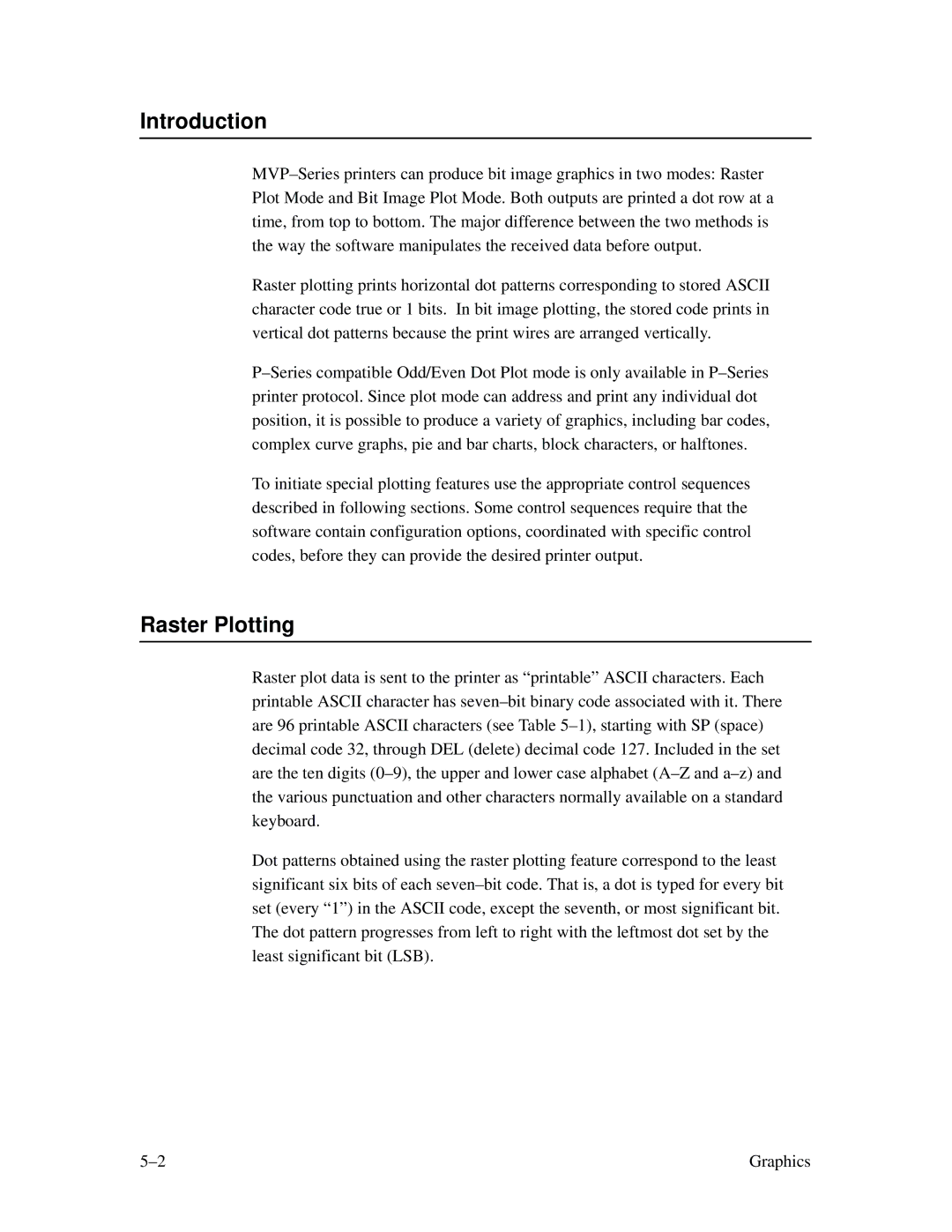
Introduction
Raster plotting prints horizontal dot patterns corresponding to stored ASCII character code true or 1 bits. In bit image plotting, the stored code prints in vertical dot patterns because the print wires are arranged vertically.
To initiate special plotting features use the appropriate control sequences described in following sections. Some control sequences require that the software contain configuration options, coordinated with specific control codes, before they can provide the desired printer output.
Raster Plotting
Raster plot data is sent to the printer as “printable” ASCII characters. Each printable ASCII character has
Dot patterns obtained using the raster plotting feature correspond to the least significant six bits of each
Graphics |
